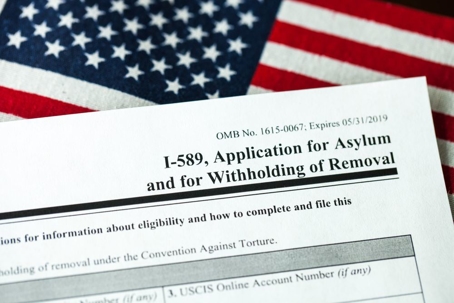"Burden of proof" is a legal term that reflects two things: WHO has the burden of proving some legal issue and WHAT the burden is -- that is, WHAT are the legal elements. In this article, we look to these questions with regard to the four different methods of seeking sanctuary against persecution. These four methods are:
- Requesting asylum as a refugee under U.S. immigration laws
- Seeking a "withholding of removal" under U.S. immigration laws
- Applying for deferral of removal and
- Using the Convention Against Torture
Asylum
The form to use for seeking asylum as a persecuted refugee is Form I-589. The burden of proof is on the applicant who is seeking asylum. A person seeking asylum must prove the following elements:
- The applicant has a well-founded fear of persecution -- the U.S. Supreme Court has said that a chance of persecution that is as low as ten percent (10%) may result in a well-founded fear sufficient for asylum; the fear must be in the mind of the applicant and also objectively clear to others; in other words, the fear cannot be just in the mind of the applicant
- The fear is based on past persecution or the risk of persecution in the future if returned to the country of origin
- The fear of persecution exists because of the applicant’s membership in a particular social group
- Where the persecutor is a government actor or a non-governmental actor that the government is unwilling or unable to control
The evidence presented by the applicant must be credible, direct, and specific. The deadline for filing is one year after the applicant arrives in the U.S.
"Withholding of Removal" Under U.S. Immigration Laws
Another method of seeking protecting in the U.S. is to seek withholding of removal under U.S. immigration laws. Again, the form to use is Form I-589. Seeking withholding of removal is purely "defensive" in the sense that the government must first seek to remove the applicant from the country. When that proceeding starts, then the applicant can file for withholding of removal based on possible persecution in the country of origin. Withholding of removal is also the only way a person previously removed from the United States can seek protection inside the United States,.
The burden of proof is on the applicant, and the elements that must be shown are essentially the same for a person seeking asylum. However, the standard is much higher. For withholding of removal, the applicant must prove that the chance of persecution is "more likely than not" -- that means a 51% chance of being persecuted if returned to the country of origin. There is no deadline for asking for withholding of removal.
Convention Against Torture
Another method of seeking sanctuary in the U.S. is to invoke the protections of the Convention Against Torture ("CAT"). Again, the form to use is Form I-598. The burden of proof lies with the person seeking to invoke the CAT. Applicants for CAT relief must prove that the torture they are likely to suffer will be “inflicted by or at the instigation of or with the consent or acquiescence of a public official or other person acting in an official capacity. The applicant must show that the likelihood of torture is more likely than not.” (51%).
Deferral of Removal Under CAT
A final method of seeking protection from persecution is to seek a deferral of removal. This is requested pursuant to CAT and is, therefore, different than asking for withholding of removal. The main difference is that some persons -- like terrorists and certain criminals -- are not eligible to ask for withholding of removal. However, there are no such limits under the CAT. The burden of proof is on the applicant, and the same legal elements must be shown for relief under CAT. However, deferral is more temporary.
Contact Yekrangi & Associates Today
For more information, contact the Orange County Immigration Attorneys at Yekrangi & Associates today. You are not alone, and we will fight for you. Yekrangi & Associates works to meet a higher standard. Our first goal is your satisfaction. Contact us at (949) 478-4963 to schedule a consultation or complete our convenient “Get Your Consultation” form here. We are located in Irvine, California.

